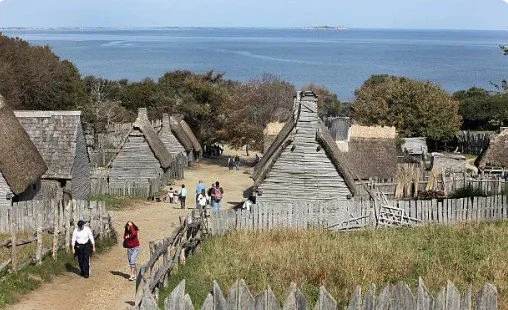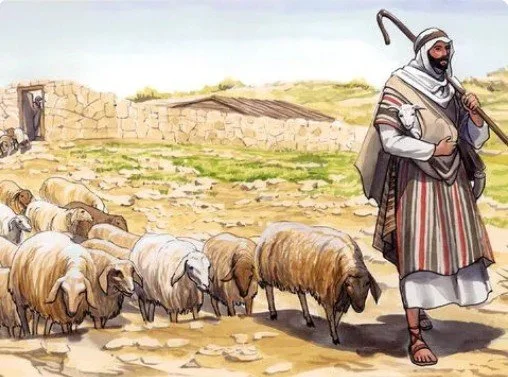Introduction
The pursuit of happiness; it’s the motivating force of the American lifestyle. “We hold these truths to be self-evident, that all men are created equal, that we are endowed by our Creator with certain unalienable rights, that among these are life, liberty, and the pursuit of happiness.”
But what did our colonial forefathers mean by it? They hazarded untamed frontiers and risked their lives fighting battles to secure their right to happiness. What did that lifestyle look like that would ultimately make them happy? Most assuredly, it was in the little things: faith, family, and children. They didn’t ask for much: a home, a garden, or a shop. And to secure these things, they worked hard for order, decency, and peace. Wouldn’t it be interesting to observe their daily lives to understand how they lived, how they found their happiness? Well, after visiting Boston’s Freedom Trail, you might head down the coast to visit the Plimoth Plantation, a re-creation of the small farming and maritime community built by the Pilgrims along the shore of Plymouth Harbor.
At Plimoth Plantation, the 17th century comes to life as people wearing historical clothing play the role of the actual inhabitants of Plymouth Colony.
Talk to them about historical events as if they are happening today, and they will express their hopes, fears, and viewpoints.
You can spend some time exploring the timber-framed houses furnished with reproductions of the types of objects that the Pilgrims owned, their aromatic kitchens, their gardens, and livestock pens. Along the Town Brook, you can watch as the 200-year-old millstones grind corn in the 1636 Grist Mill. You can even take home some of the freshly stone-ground grains. A Pilgrim woman might ask you to help her pound corn, or you might visit with her in the garden, or help her make sage and salt toothpaste. Along the main street, you may be called on to join a muster drill with Captain Miles Standish. He will show you how the Pilgrims prepared themselves to keep their town safe. Perhaps you’d like to play a Pilgrim game. The work was very hard, but they always had time for a little recreation.
Stroll by the coastline and you’ll be amazed at the centerpiece of Plymouth Harbor, the Mayflower II. It’s a real sailing ship reconstructed after the original Mayflower that brought the Pilgrims to America. In many ways, America is the product of what happened in Plymouth over four centuries ago; the choices made, the risks taken, and the adaptation of the community to new social and civic realities.
Mayflower II tangibly embodies those choices and risks. More than twenty-five million people have stepped aboard her decks to imagine the perils and contemplate the modern impacts of the historic crossing.
Watching those lives in action can be both exciting and educational. When you watch, and engage your imagination, the events become experiences that you share in and learn from. The role players, vignettes, and reconstructions are your window into a world of the past. The scene is transformative, transporting you to another world with colorful backgrounds and living characters. Imagining yourself in their daily lives is like putting on their clothes, their speech, and their customs. You can adopt their lifestyle and better understand its importance and historical meaning. You’ll be deeply moved and changed for the better by it.
It may take a bit more imagination if you were just reading about it, but the more you engage, adapting to the role for yourself, the more you’ll appreciate the importance of their faith, fortitude, and their way of life. But what does the pursuit of happiness look like for you? For we are all engaged in a pursuit to find the ultimate happiness. It's something we sometimes refer to as Eternal Life! It's not just where you arrive at the end of life’s journey, it’s the happiness that fills your everyday life if you know the right way to live. In the pages that follow, I encourage you to engage in the vignettes played out in the stories Jesus told his disciples.
Taking the Gospel of St. John as your guidebook, you’ll find seven teachings retold by the Apostle where Jesus tells his disciples who he is, and what he means to them. There is quite a bit of symbolism here that you may or may not relate to or have only heard in brief statements. But take a closer look at the scene and the role that Jesus plays in the story.
Observe the setting and the background, and watch the characters’ movements more closely to get a better understanding of who Jesus is. And most importantly, discover for yourself how Jesus wants to play out those roles in your own life. It’s been mentioned before, but it bears repeating; as an eyewitness to all that took place, St. John wrote his gospel selecting those first-hand experiences that would have a specific impact on the reader. At the end of the book he writes, “and truly Jesus did many other signs in the presence of His disciples, which are not written in this book; but these are written that you may believe that Jesus is the Christ, the Son of God, and that believing you may have life in His name.” The first part of Signposts to Eternity was written to explain the signs Jesus gave that you might believe. In this part, the names of Jesus are emphasized so that you may have life, Eternal Life, in His name!
These vignettes set before you by the Apostle will lead you ever upward, challenging you to embrace the truth of his testimony. You may already believe that Jesus is the Christ, the Son of God, but still wonder, “How does that relate to me? Are the descriptions he gave two thousand years ago really relevant for me today?” Hopefully, these ‘I am’ statements made by Jesus will help answer your most challenging questions. Every one of them places Jesus at the center of one of our greatest needs and desires for happiness. Jesus called himself the bread of life, the light of the world, the good shepherd, the true vine, and more. Each name we encounter will bring you, step by step, into a clearer vision of who he is, a deeper love for all he does, and a firmer resolve to walk by his side.
When Jesus said, ”I have told you these things so that you will be filled with my joy. Yes, your joy will overflow!”, he was pointing out the way to the true happiness of eternal life. The ‘I am’ names by which Jesus calls himself is your revelation of how he gives you his joy and makes your joy overflow.
With these chapters, the Vignettes of the Master joins with our Signposts to Eternity to give you a fuller understanding of what St. John, the beloved disciple, experienced first-hand. But you will have to decide for yourself what to believe about the roles that Jesus portrays. When St. John first heard these stories, the setting and background may have physically exemplified what Jesus was saying. They may have been passing by a pasture or walking through a vineyard. You may not have the benefit of being by a sheepfold or an emptied grave, but put yourself in the place of the Apostles and picture yourself as a participant in the re-enactment of the vignette. In the chapters that follow, we’ll construct the setting, describe the scene, and translate the symbolism in plain language. Inevitably, there will be some interpretation and conclusions drawn from reading the stories. You should endeavor to use your imagination as if you were witnessing the event as it happened when Jesus first said, ‘I am.’ Hopefully, the act will play out like the performance of a lifetime, and you, too, will be filled with the same joy that St. John experienced.
St. John makes this statement at the end of his gospel; “there are also many other things that Jesus did, which if they were recorded one by one, I suppose that even the world itself could not contain the books that would be written.” Now, our consideration of the Signposts to Eternity continues with another of those books that St. John foresaw.
So, let’s watch the play together and consider the Vignettes of the Master. Each act will stir your desires, your determination, and your devotion. As you pass from one to the next, what you believe will grow stronger and lead to the fullness of joy, to the eternal life, that Jesus promised to all who believe in Him.





